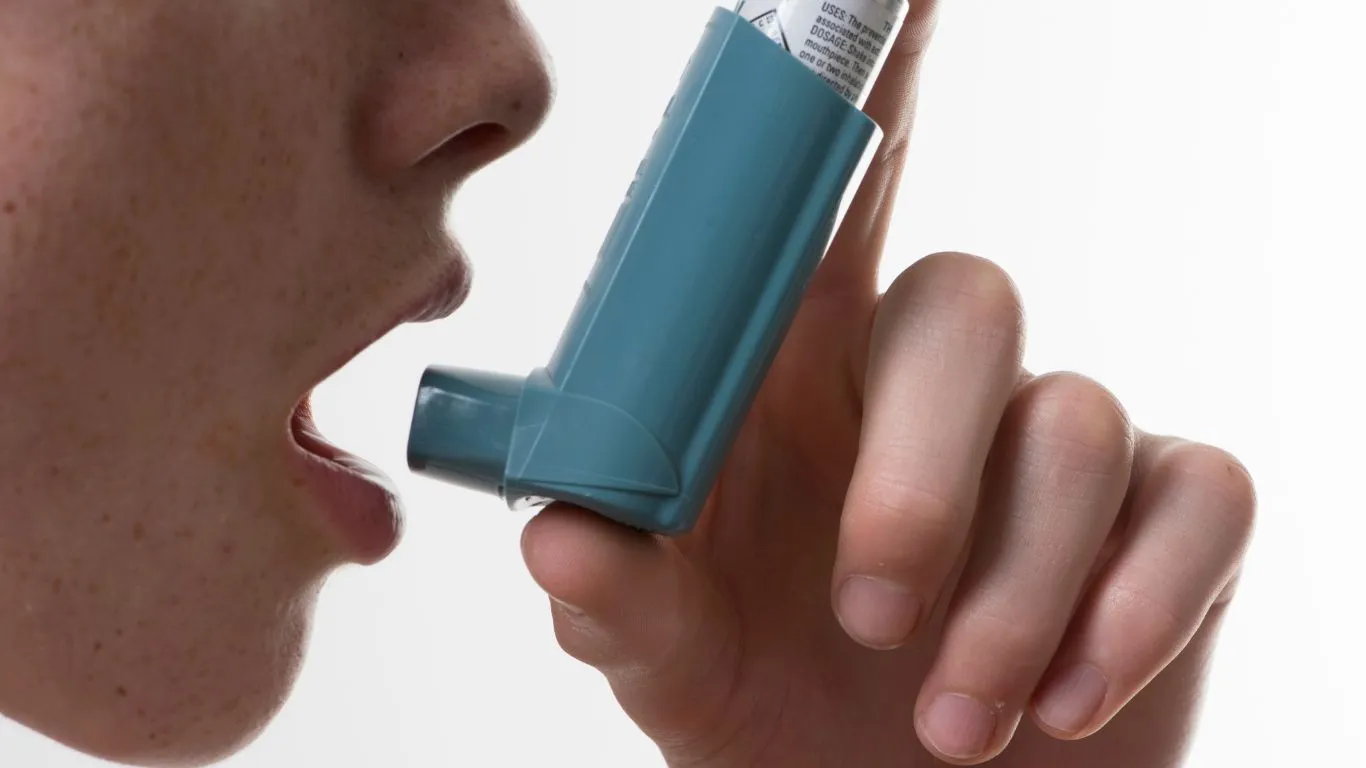Tips for Asthma During Springtime – Your Guide to Breathing Easy
Springtime is beautiful, right? Flowers are blooming, the weather is warming up, and everything seems fresh. But for people with asthma, this season can be a bit of a nightmare. The increase in pollen, dust, and even certain weather conditions can trigger asthma attacks. If you’re trying to navigate this while managing asthma, don’t worry—I’ve got your back with some practical tips to help keep things in check. Let’s jump right in!

Why Springtime Can Be Tough for Asthma
Ah, spring—the season when everything comes alive! However, it’s also when allergens like pollen and mold spores are at their highest. For those with asthma, this can make breathing more difficult. When the weather is warmer, the air tends to stir up all these pesky triggers, and that can lead to increased asthma symptoms. Think shortness of breath, coughing, and wheezing. Not fun, right?
So, how do you still enjoy spring without feeling like your lungs are on fire? Well, here are some tips that might help.
1. Stay on Top of Your Medications
Okay, so I know this one seems obvious, but it’s so important. If you have a prescribed asthma medication, especially a daily controller, make sure you’re taking it as prescribed, even if you’re not feeling bad. Some people skip it because they feel fine, but keeping your asthma under control before things get worse is key.
If you rely on a rescue inhaler, make sure it’s easily accessible. You don’t want to be scrambling around looking for it when you’re struggling to breathe. Keep it in your bag, car, or desk—anywhere you spend a lot of time.

2. Check the Pollen Count Daily
During the spring months, pollen can really be a pain. And because it’s hard to avoid the outdoors completely, it’s best to check the pollen count daily. Many weather apps or websites give pollen forecasts, so you can plan your outdoor activities accordingly. If the pollen count is sky-high, it might be a good idea to stay inside or limit your outdoor time, especially on windy days when pollen is being carried around more.
3. Keep Windows Closed
Ah, that fresh spring breeze. It’s tempting, right? But for those with asthma, it’s best to keep your windows shut, especially on high pollen days. Open windows can let in pollen and mold, both of which can irritate your airways. Instead, use an air conditioner to circulate cool air indoors. If you do need to open windows, try doing so during the morning when the pollen levels tend to be lower.
4. Clean and Dust Regularly
Dust mites, mold, and pet dander are all common asthma triggers, and spring cleaning can really make a difference in your indoor environment. Clean your home often, especially if you have carpets, as they trap dust and allergens. Use a vacuum with a HEPA filter to trap fine particles, and wipe surfaces with a damp cloth to avoid kicking dust into the air.
Also, don’t forget about the air quality. An air purifier with a HEPA filter can help reduce airborne allergens. Keeping your home as allergen-free as possible means less chance of triggering an asthma attack.

5. Avoid Peak Outdoor Activity Hours
If you love to be outside, I get it—but during the spring, it’s better to stick to certain times of day for outdoor activities. Pollen levels are usually highest in the early morning and late afternoon, so try to plan your runs, walks, or bike rides in the early afternoon or evening when pollen tends to settle. Plus, avoid outdoor exercises on windy days when pollen is being tossed around.
6. Wear Sunglasses and a Mask
If you must go outside during high pollen times, wearing sunglasses can help protect your eyes from irritation caused by pollen. And hey, a simple face mask can also block some pollen from entering your nose and mouth. It’s not the most glamorous look, but it can make a big difference!
7. Monitor Your Breathing with an Asthma Action Plan
An asthma action plan is basically a map for managing your asthma—detailing what to do if your symptoms worsen. Work with your healthcare provider to develop one, and keep it updated, especially during allergy season. It’s important to track your symptoms, your peak flow readings, and any changes in your condition so that you can take action before things escalate.
8. Stay Hydrated
Spring allergies and asthma symptoms can both dry out your airways, making it harder to breathe. Drink plenty of water throughout the day to stay hydrated. Water helps keep your airways moist and more able to handle any irritation caused by pollen or other allergens. Herbal teas (without caffeine) can also be soothing.
9. Know When to Seek Help
If you notice that your asthma symptoms are getting worse or you’re relying more on your rescue inhaler, it’s time to check in with your doctor. Sometimes, asthma symptoms can become more difficult to control during certain seasons, and your treatment plan might need an update. Don’t wait until your symptoms become severe—talk to your healthcare provider as soon as you notice a change.
10. Allergy Shots (Immunotherapy)
If you find that spring allergies are an ongoing issue, you might want to talk to your doctor about allergy shots. Immunotherapy can help desensitize your body to common allergens, reducing the severity of your asthma attacks over time. This is a longer-term solution that can be really effective if spring allergies are a major problem for you.
Conclusion
Managing asthma during spring is all about being proactive. By staying on top of your medications, keeping your environment clean, and checking pollen levels, you can enjoy the beauty of the season without all the wheezing and coughing. Remember, asthma doesn’t have to hold you back—just be smart about your triggers and make adjustments as needed.

Appendices
FAQs
- What are the main asthma triggers in spring?
Pollen, mold, and dust mites are the biggest asthma triggers in spring. They can irritate your airways and worsen symptoms.
- Should I stay inside when pollen levels are high?
Yes, staying indoors during high pollen days is recommended, but if you must go outside, try to limit your time and wear sunglasses or a mask.
- Is it okay to exercise outdoors if I have asthma?
It’s okay, but try to avoid outdoor exercise during peak pollen times (morning and late afternoon) and choose less windy days.
- What can I do if my asthma symptoms worsen during spring?
Make sure you’re following your asthma action plan, take your medications as prescribed, and seek help from your healthcare provider if needed.
- How can I make my home less allergenic?
Clean regularly, use an air purifier, and keep windows closed to prevent pollen and other allergens from entering your home.
References
- American Lung Association. (2024). “Spring Allergies and Asthma.” Read Article
- National Institute of Allergy and Infectious Diseases (NIAID). (2024). “Allergic Asthma Management.” Read Article
- Mayo Clinic. (2023). “Asthma Management in Allergy Season.” Read Article
Disclaimer
The information in this article is intended for educational purposes only and should not replace medical advice. Always consult with your healthcare provider for personalized asthma management.













